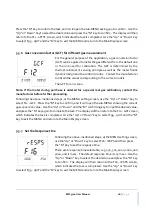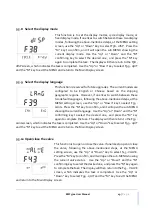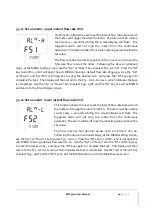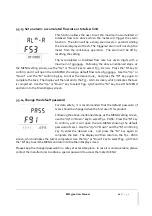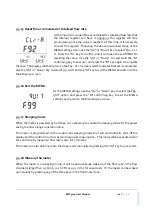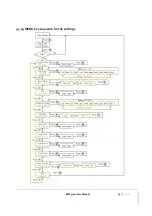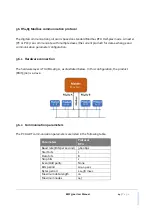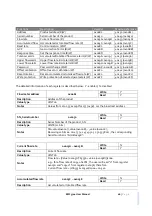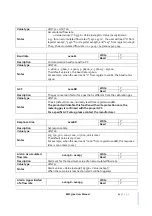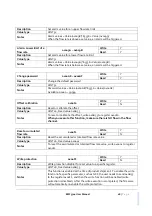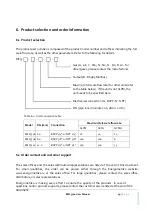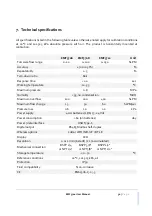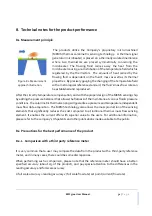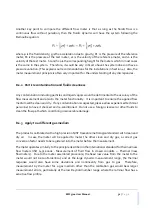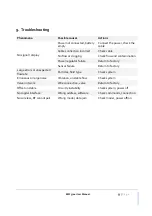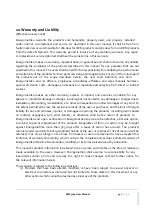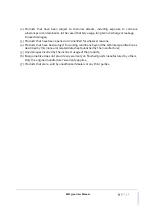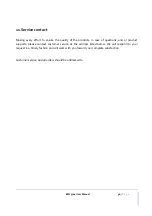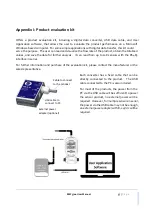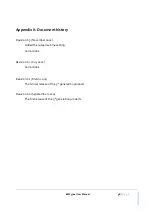
EMF5700
User
Manual
32
|
P a g e
Another
key
point
to
compare
the
different
flow
meter
is
that
as
long
as
the
fluidic
flow
is
a
continuous
flow
without
pulsation,
then
the
fluidic
dynamic
will
have
the
system
following
the
Bernoulli
equation:
where
ρ
is
the
fluid
density;
g
is
the
acceleration
due
to
gravity;
P1
is
the
pressure
of
the
reference
meter;
P2
is
the
pressure
at
the
test
meter;
v1
is
the
velocity
of
the
reference
meter,
and
v2
is
the
velocity
of
the
test
meter.
h1
and
h2
are
the
corresponding
height
for
the
meters
which
in
most
cases
is
the
same
in
the
system.
Therefore,
it
would
be
very
critical
to
have
the
system
does
not
have
a
pressure
variation.
(This
explains
our
recommendations
for
the
installations
in
Section
4).
Also,
the
meter
measurement
principle
is
often
very
important
for
the
understanding
of
any
discrepancies.
8.2.2
Particle
contamination
and
fluidic
cleanness
Any
contamination
including
particles
and
liquid
vapors
would
be
detrimental
to
the
accuracy
of
the
flow
measurement
and
also
to
the
meter
functionality.
It
is
important
to
ensure
the
applied
flow
medium
will
be
clean
and
dry.
If
any
contamination
is
suspected,
please
allow
experienced
technical
personnel
to
have
it
checked
and
re
‐
conditioned.
Do
not
use
a
foreign
cleanser
or
other
fluids
to
clean
the
flow
path
which
could
bring
irrecoverable
damage.
8.2.3
Apply
to
a
different
gas
medium
The
product
is
calibrated
with
a
high
precision
NIST
traceable
metrological
standard
with
clean
and
dry
air.
In
case
the
meter
will
be
applied
to
meter
the
other
clean
and
dry
gas,
a
correct
gas
conversion
factor
needs
to
be
registered
into
the
meter
before
the
measurement.
The
meter
operates
similarly
to
the
principle
described
in
the
international
standard
for
thermal
mass
flow
meters
(ISO
14511:2001
‐
Measurement
of
fluid
flow
in
closed
conduits
—
Thermal
mass
flowmeters).
Due
to
the
meter
assembled
procedure,
the
head
loss
value
from
the
meter
to
the
meter
would
not
be
100%
identical,
and
at
the
large
dynamic
measurement
range,
the
thermal
response
would
also
have
some
deviations
and
nonlinearity
from
gas
to
gas.
Therefore,
measurement
by
the
meter
for
a
gas
medium
other
than
the
calibration
gas
would
bear
larger
measurement
errors,
particularly
at
the
low
Reynold
number
range
where
the
laminar
flow
has
a
sensitive
flow
profile.

